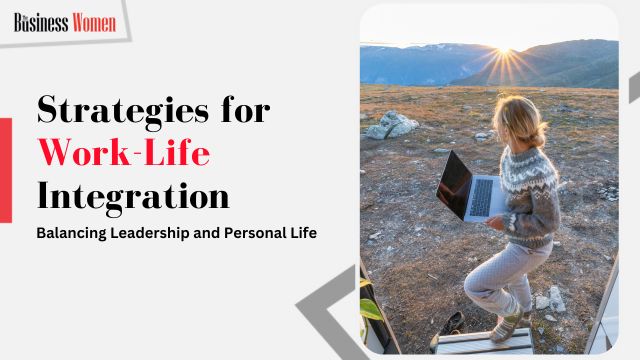Strategies for Work-Life Integration: Balancing Leadership and Personal Life
In today’s fast-paced and demanding business world, achieving a harmonious work-life integration is a challenge, particularly for women in leadership roles. Striking the right balance between professional responsibilities and personal life is crucial for overall well-being and sustained success. In this article, we explore effective strategies that women in leadership positions can adopt to manage work-life integration and lead fulfilling personal lives while excelling in their professional roles in India.
Prioritise and Set Boundaries:
Effective work-life integration begins with prioritisation. Women leaders should identify their most critical professional and personal goals and allocate time and energy accordingly. Setting clear boundaries between work and personal time helps prevent burnout and ensures quality time for both aspects of life.
Embrace Flexible Work Arrangements:
Advocating for and embracing flexible work arrangements can significantly contribute to work-life integration. Women leaders can negotiate flexible work hours, remote work options, or job-sharing arrangements to accommodate personal commitments while fulfilling their leadership responsibilities.
Delegate and Empower:
Leadership involves delegation and empowering team members. Women leaders should trust their teams and delegate tasks effectively. By empowering others to take on responsibilities, they create space for personal commitments without compromising productivity.
Practice Mindfulness and Self-Care:
Mindfulness and self-care are vital for maintaining work-life integration. Taking time for self-reflection, relaxation, and physical well-being helps women leaders stay centred and manage stress effectively, leading to increased productivity and overall happiness.
Utilise Technology Wisely:
Technology can be a double-edged sword in work-life integration. While it enables remote work and communication, it can also blur the boundaries between work and personal life. Women leaders should use technology wisely and establish specific times for work-related activities.
Leverage Support Systems:
Building and relying on support systems can significantly ease work-life integration. Whether it’s a strong network of family, friends, or professional mentors, having a support system provides emotional and practical assistance during challenging times.
Set Realistic Expectations:
Women leaders should set realistic expectations for themselves and others. Recognising that perfection is not always attainable and embracing imperfections allows for a healthier approach to work and personal life.
Batch and Optimise Tasks:
Efficient time management is essential for work-life integration. Women leaders can optimise their schedules by batching similar tasks together and eliminating time-wasting activities. This approach allows for more focused and productive workdays.
Be Present in the Moment:
Being present in both professional and personal settings is crucial for work-life integration. When at work, women leaders should focus on tasks and interactions with colleagues. Similarly, when spending time with family or engaging in personal activities, being fully present enriches the experience.
Learn to Say No:
Saying no to non-essential commitments is a skill women leaders must master. By declining requests or tasks that do not align with their priorities, they create space for more meaningful engagements in both their personal and professional lives.
Conclusion
Work-life integration is an ongoing process that requires conscious effort and adaptability. For women in leadership roles, achieving a balance between their professional responsibilities and personal life is a journey that demands strategic planning, prioritisation, and resilience. By embracing flexible work arrangements, setting boundaries, and empowering their teams, women leaders can thrive both in their careers and personal lives. Utilising technology wisely, leveraging support systems, and practising mindfulness contribute to their overall well-being and success. By applying these strategies, women leaders can create a harmonious work-life integration that enhances their leadership effectiveness and enriches their personal experiences in the vibrant business world of India.

